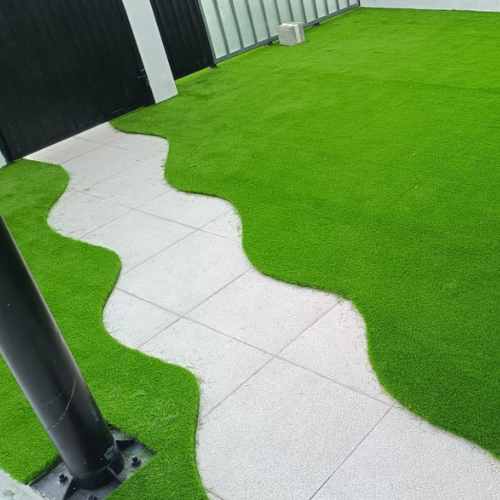Artificial Grass, also known as Synthetic Turf or Fake Grass, is a man-made surface designed to mimic natural grass. Here's an overview:
Benefits:
1. Low maintenance (no mowing, watering, or fertilizing)
2. Durability (can withstand heavy use and weather conditions)
3. Water conservation
4. Pet-friendly
5. Allergy-friendly (no pollen or grass allergies)
6. Year-round use (no seasonal restrictions)
7. Cost-effective (long-term savings)
Types of Artificial Grass:
1. Monofilament (most realistic, soft, and durable)
2. Thermoplastic (inexpensive, durable, and easy to install)
3. fibrillated (textured, natural look, and feel)
4. Hybrid (combination of monofilament and fibrillated)
Applications:
1. Residential lawns
2. Commercial landscaping (offices, hotels, restaurants)
3. Sports fields (football, soccer, tennis, golf)
4. Playgrounds and parks
5. Pet areas (dog parks, kennels)
6. Roof gardens and balconies
Features:
1. Pile height: 1-3 inches
2. Density: 10,000-50,000 stitches per square meter
3. Material: Polypropylene, Polyethylene, or Nylon
4. Backing: Primary and secondary backing for stability
5. Infill: Sand or rubber particles for stability and cushioning
Installation Methods:
1. Glue-down
2. Staple-down
3. Floating (loose-lay)
Maintenance Tips:
1. Brush regularly to maintain texture
2. Clean debris and spills promptly
3. Inspect and repair damaged areas
4. Apply infill material as needed
Brands and Manufacturers:
1. AstroTurf
2. FieldTurf
3. Synthetic Turf International
4. TigerTurf
5. ForeverLawn
Price Range (per sq. ft.):
1. Basic: $0.50-$2.00
2. Mid-range: $1.50-$4.00
3. Premium: $3.00-$6.00
Life Expectancy:
1. Residential: 10-20 years
2. Commercial: 5-15 years
3. Sports fields: 5-10 years


